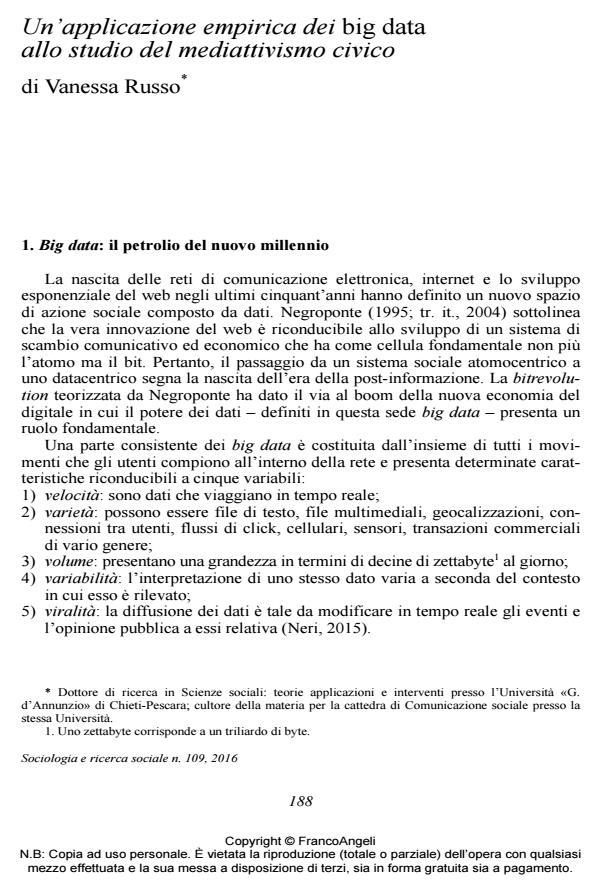An Empirical Application of Big Data to the Study on Civic Mediactivism
Journal title SOCIOLOGIA E RICERCA SOCIALE
Author/s Vanessa Russo
Publishing Year 2016 Issue 2016/109
Language Italian Pages 16 P. 188-203 File size 686 KB
DOI 10.3280/SR2016-109015
DOI is like a bar code for intellectual property: to have more infomation
click here
Below, you can see the article first page
If you want to buy this article in PDF format, you can do it, following the instructions to buy download credits

FrancoAngeli is member of Publishers International Linking Association, Inc (PILA), a not-for-profit association which run the CrossRef service enabling links to and from online scholarly content.
Social Cyberspace, in the 3.0 era, reconfigures social intelligence as an effect of a new perception of shared knowledge. This virtuous circle, increased by the event of the Web «at the tip on your fingers», influences users’ behavior between virtual and real dimensions, and determines the development of new spaces and digital bodies. The phenomenon of Civic Mediactivism is born and is played in this context. The purpose of this essya is to investigate the values underlying the phenomenon, and understand how the social sciences can study its form, content and social function, in relation to the ontological, ethical and methodological dimensions
- Handbook of Research on Advanced Research Methodologies for a Digital Society Costantino Cipolla, pp.42 (ISBN:9781799884736)
- Mathematical-Statistical Models and Qualitative Theories for Economic and Social Sciences Vanessa Russo, pp.41 (ISBN:978-3-319-54818-0)
Vanessa Russo, Un’applicazione empirica dei big data allo studio del mediattivismo civico in "SOCIOLOGIA E RICERCA SOCIALE " 109/2016, pp 188-203, DOI: 10.3280/SR2016-109015